Short-Stalk Isoforms of CADM1 and CADM2 Trigger Neuropathogenic Measles Virus-Mediated Membrane Fusion by Interacting with the Viral Hemagglutinin
- PMID: 34788082
- PMCID: PMC8826817
- DOI: 10.1128/JVI.01949-21
Short-Stalk Isoforms of CADM1 and CADM2 Trigger Neuropathogenic Measles Virus-Mediated Membrane Fusion by Interacting with the Viral Hemagglutinin
Abstract
Measles virus (MeV), an enveloped RNA virus in the family Paramyxoviridae, usually causes acute febrile illness with skin rash but in rare cases persists in the brain, causing a progressive neurological disorder, subacute sclerosing panencephalitis (SSPE). MeV bears two envelope glycoproteins, the hemagglutinin (H) and fusion (F) proteins. The H protein possesses a head domain that initially mediates receptor binding and a stalk domain that subsequently transmits the fusion-triggering signal to the F protein. We recently showed that cell adhesion molecule 1 (CADM1; also known as IGSF4A, Necl-2, and SynCAM1) and CADM2 (also known as IGSF4D, Necl-3, and SynCAM2) are host factors enabling cell-cell membrane fusion mediated by hyperfusogenic F proteins of neuropathogenic MeVs as well as MeV spread between neurons lacking the known receptors. CADM1 and CADM2 interact in cis with the H protein on the same cell membrane, triggering hyperfusogenic F protein-mediated membrane fusion. Multiple isoforms of CADM1 and CADM2 containing various lengths of their stalk regions are generated by alternative splicing. Here, we show that only short-stalk isoforms of CADM1 and CADM2 predominantly expressed in the brain induce hyperfusogenic F protein-mediated membrane fusion. While the known receptors interact in trans with the H protein through its head domain, these isoforms can interact in cis even with the H protein lacking the head domain and trigger membrane fusion, presumably through its stalk domain. Thus, our results unveil a new mechanism of viral fusion triggering by host factors. IMPORTANCE Measles, an acute febrile illness with skin rash, is still an important cause of childhood morbidity and mortality worldwide. Measles virus (MeV), the causative agent of measles, may also cause a progressive neurological disorder, subacute sclerosing panencephalitis (SSPE), several years after acute infection. The disease is fatal, and no effective therapy is available. Recently, we reported that cell adhesion molecule 1 (CADM1) and CADM2 are host factors enabling MeV cell-to-cell spread in neurons. These molecules interact in cis with the MeV attachment protein on the same cell membrane, triggering the fusion protein and causing membrane fusion. CADM1 and CADM2 are known to exist in multiple splice isoforms. In this study, we report that their short-stalk isoforms can induce membrane fusion by interacting in cis with the viral attachment protein independently of its receptor-binding head domain. This finding may have important implications for cis-acting fusion triggering by host factors.
Keywords: CADM1; CADM2; SSPE; cis-acting fusion triggering; hemagglutinin; measles virus; membrane fusion; neuropathogenicity; splice isoform; subacute sclerosing panencephalitis.
Conflict of interest statement
The authors declare no conflict of interest.
Figures
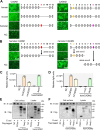
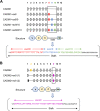
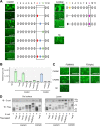
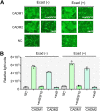
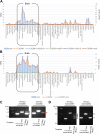
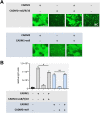
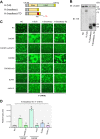
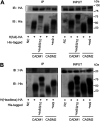
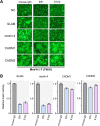
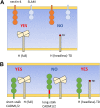
Similar articles
-
Interaction of the Hemagglutinin Stalk Region with Cell Adhesion Molecule (CADM) 1 and CADM2 Mediates the Spread between Neurons and Neuropathogenicity of Measles Virus with a Hyperfusogenic Fusion Protein.J Virol. 2023 May 31;97(5):e0034023. doi: 10.1128/jvi.00340-23. Epub 2023 May 11. J Virol. 2023. PMID: 37166307 Free PMC article.
-
CADM1 and CADM2 Trigger Neuropathogenic Measles Virus-Mediated Membrane Fusion by Acting in cis.J Virol. 2021 Jun 24;95(14):e0052821. doi: 10.1128/JVI.00528-21. Epub 2021 Jun 24. J Virol. 2021. PMID: 33910952 Free PMC article.
-
Amino acid changes accumulated in the fusion protein allow neuropathogenic measles viruses to use a broad repertoire of host factors for cell fusion triggering.J Virol. 2025 May 20;99(5):e0230724. doi: 10.1128/jvi.02307-24. Epub 2025 Apr 7. J Virol. 2025. PMID: 40192292 Free PMC article.
-
New Insights into Measles Virus Brain Infections.Trends Microbiol. 2019 Feb;27(2):164-175. doi: 10.1016/j.tim.2018.08.010. Epub 2018 Sep 13. Trends Microbiol. 2019. PMID: 30220445 Review.
-
Measles virus glycoprotein complex assembly, receptor attachment, and cell entry.Curr Top Microbiol Immunol. 2009;329:59-76. doi: 10.1007/978-3-540-70523-9_4. Curr Top Microbiol Immunol. 2009. PMID: 19198562 Free PMC article. Review.
Cited by
-
Functional properties of measles virus proteins derived from a subacute sclerosing panencephalitis patient who received repeated remdesivir treatments.J Virol. 2024 Mar 19;98(3):e0187423. doi: 10.1128/jvi.01874-23. Epub 2024 Feb 8. J Virol. 2024. PMID: 38329336 Free PMC article.
-
The measles virus matrix F50S mutation from a lethal case of subacute sclerosing panencephalitis promotes receptor-independent neuronal spread.J Virol. 2025 Jan 31;99(1):e0175024. doi: 10.1128/jvi.01750-24. Epub 2024 Dec 6. J Virol. 2025. PMID: 39641619 Free PMC article.
-
Emerging evidence of microbial infection in causing systematic immune vasculitis in Kawasaki disease.Front Microbiol. 2023 Dec 22;14:1313838. doi: 10.3389/fmicb.2023.1313838. eCollection 2023. Front Microbiol. 2023. PMID: 38188572 Free PMC article. Review.
-
Collective fusion activity determines neurotropism of an en bloc transmitted enveloped virus.Sci Adv. 2023 Jan 27;9(4):eadf3731. doi: 10.1126/sciadv.adf3731. Epub 2023 Jan 27. Sci Adv. 2023. PMID: 36706187 Free PMC article.
-
Interaction of the Hemagglutinin Stalk Region with Cell Adhesion Molecule (CADM) 1 and CADM2 Mediates the Spread between Neurons and Neuropathogenicity of Measles Virus with a Hyperfusogenic Fusion Protein.J Virol. 2023 May 31;97(5):e0034023. doi: 10.1128/jvi.00340-23. Epub 2023 May 11. J Virol. 2023. PMID: 37166307 Free PMC article.
References
-
- Griffin DE. 2013. Measles virus, p 1042–1069. In Knipe DM, Howley PM, Cohen JI, Griffin DE, Lamb RA, Martin MA, Racaniello VR, Roizman B (ed), Fields virology, 6th ed. Lippincott Williams & Wilkins, Philadelphia, PA.
Publication types
MeSH terms
Substances
LinkOut - more resources
Full Text Sources
Medical
Miscellaneous

